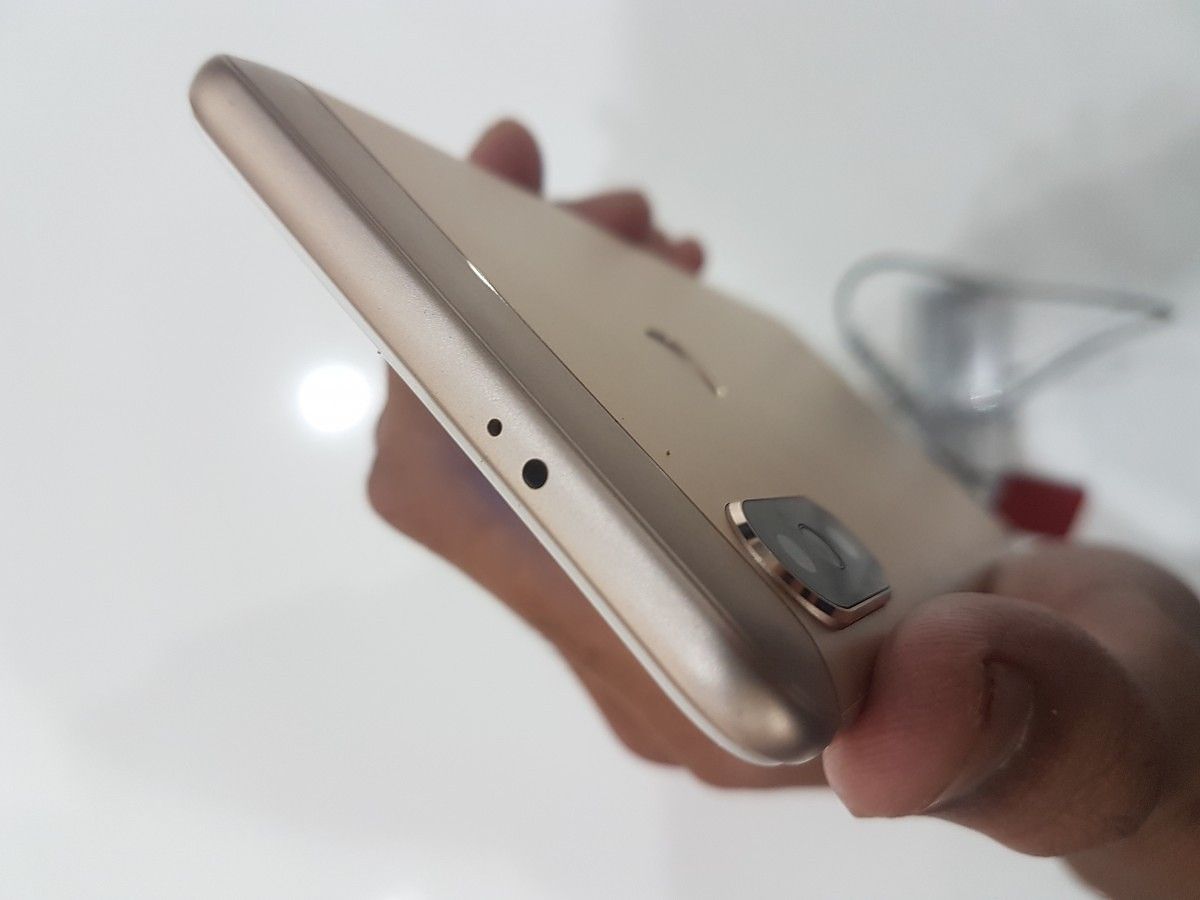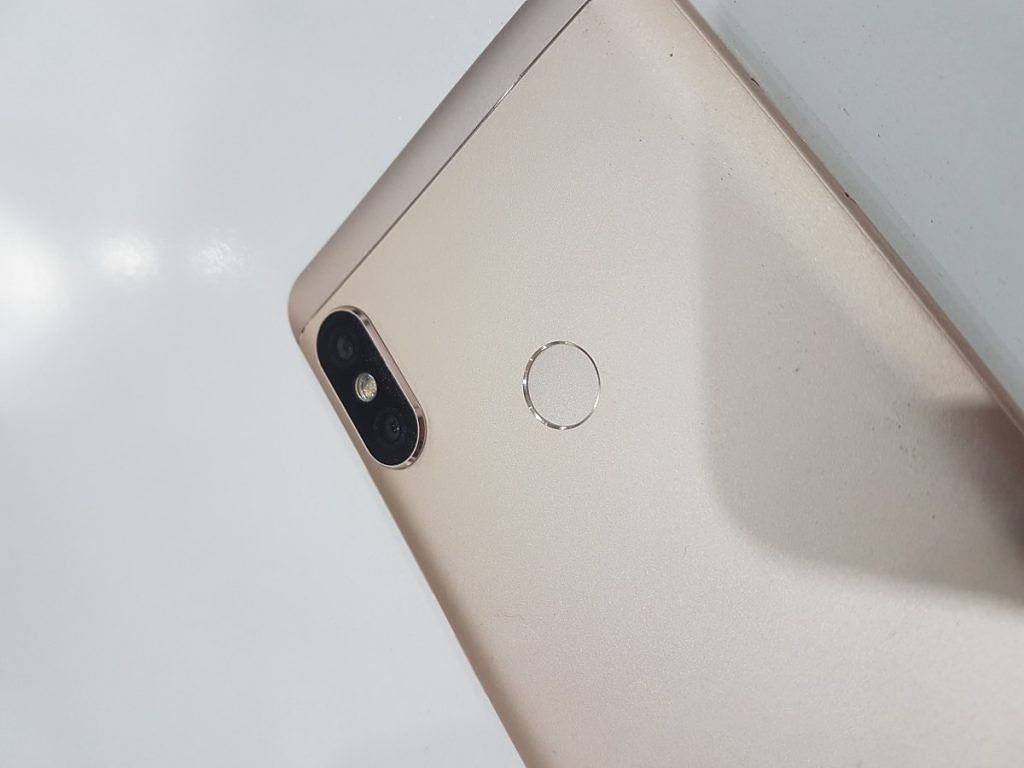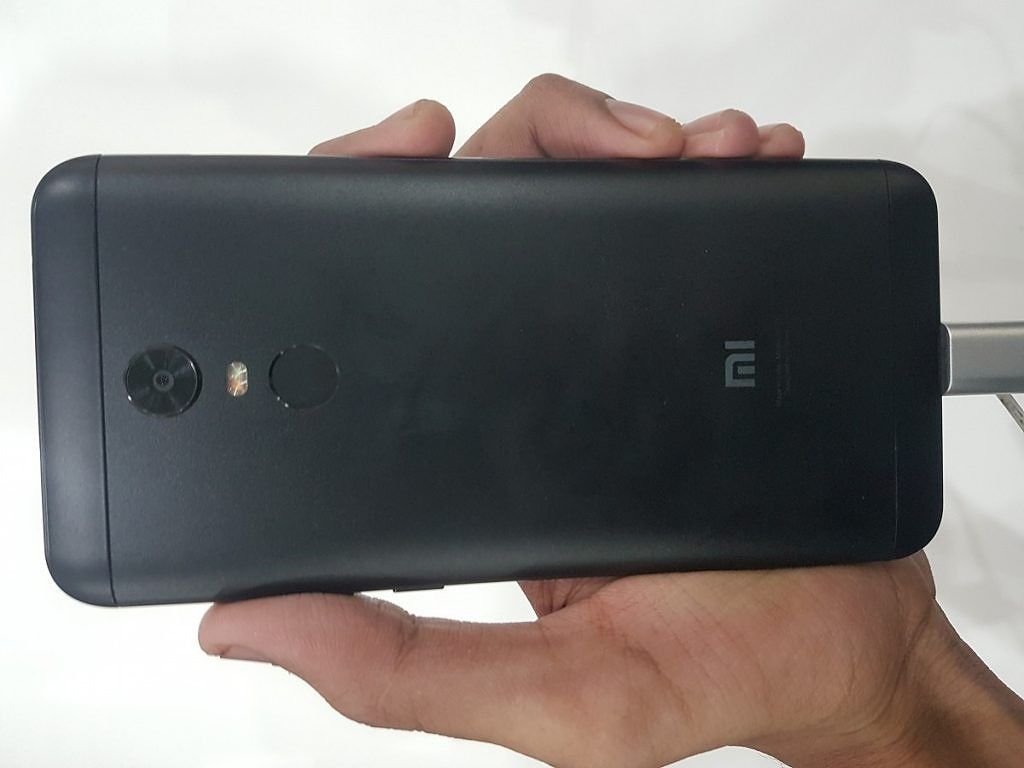At an event in New Delhi on Wednesday, Xiaomi launched the successors to 2017's Redmi Note 4: The Redmi Note 5 and Redmi Note 5 Pro. The acclaimed Redmi Note 4 was one of the best-selling smartphones in the mid-range price segment last year, with over 9 million units shipped. Xiaomi is hoping to repeat the magic with the Redmi Note 5 and Redmi Note 5 Pro, and in the process cement its position as a market leader in the highly competitive Indian smartphone market.
Redmi Note 5 Pro
The Redmi Note 5 Pro is the more powerful of the two devices. It features a premium metal unibody design with rounded corners that feels solid and comfortable in the hand. (Xiaomi says the rounded corners not only contribute to the phone's elegant design, but also make the screen more durable.) The front of the device is dominated by a 5.9 Full HD+ (2160 x 1080) 18:9 aspect ratio display with very slim bezels, and there aren't any capacitive navigation buttons to speak of -- switching to a taller aspect ratio display meant that Xiaomi had to ditch touch-sensitive buttons for on-screen navigation buttons.
Powering the Redmi Note 5 Pro is a Qualcomm Snapdragon 636 octa-core system-on-a-chip (SoC), which packs eight custom-designed Kryo 260 cores and an Adreno 509 GPU. It's coupled with either 4GB/6GB of LPDDR4X RAM and 64GB of eMMC 5.1 flash storage, depending on the configuration.
With the Redmi Note 5 Pro, Xiaomi is finally bringing a dual-camera setup to the Redmi lineup. The rear camera module comprises a 12MP f/2.2 primary sensor and a 5MP f/2.0 depth sensor that work in tandem to offer features like portrait mode and "authentic bokeh effects". The primary rear camera has electronic image stabilization (EIS) for video recording, and Xiaomi says that thanks to its larger pixel size, it's able to capture more light than previous-gen Redmi Note cameras. The front camera, meanwhile, has been upgraded a 20MP f/2.0 Sony IMX376 sensor, and it's accompanied by a front LED flash and a "Beautify 4.0" AI algorithm that helps capture perfect selfies regardless of lighting conditions.
The Redmi Note 5 Pro comes in four color options -- Black, Gold, Lake Blue and Rose Gold -- and starts at ₹13,999 ($218) for the 4GB RAM model with 64GB storage, and ₹16,999 ($265) for the 6GB RAM model with 64GB of storage.
Redmi Note 5
For those looking for a budget-friendly phone with an edge-to-edge display and great cameras, there's the standard Redmi Note 5, which Xiaomi is touting as a top-to-bottom upgrade over its predecessor. It's basically a rebranded version of the Redmi 5 Plus that launched in China late last year.
From the front, the Redmi Note 5 looks just like the Redmi Note 5 Pro, down to the 5.9-inch Full HD+ 18:9 panel with rounded corners and slim bezels. But turn it upside down and you’ll notice a typical Xiaomi design with the rear camera sensor, flash module, and fingerprint sensor perpendicular to the phone’s plastic top and bottom caps. There are no fancy dual cameras like on the Redmi Note 5 Pro -- the phone features a single 12MP f/2.2 sensor, phase detection autofocus, and a dual-tone LED flash, and a 5MP front camera with a front LED flash.
The Redmi Note 5's processing power is nothing to write home about, either -- it sports last year’s Snapdragon 625 chipset, which has eight ARM Cortex-A53 cores clocked at 2.0GHz. The chip is paired with either 3GB or 4GB of RAM and 32GB or 64GB of storage, respectively.
As for pricing, the Redmi Note 5 starts at ₹9,999 ($156) for the 3GB RAM model with 32GB -- the 4GB RAM model with 64GB storage will set you back ₹11,999 ($187). Both will be available in the same colors as the Redmi Note 5 Pro.
Both the Redmi Note 5 and Redmi Note 5 Pro pack 4,000mAh batteries, a slight step down from the 4,100mAh battery in the Redmi Note 4. (Xiaomi says the Redmi Note 5 will deliver about eight hours of continuous gaming and 14 hours of video playback.) And neither have a USB Type-C ports, which is a little disappointing for smartphones launching in 2018. On the flipside, both devices retain a 3.5mm audio jack and microSD card slots.
On the software side of things, both phones ship with Android 7.1.1 Nougat with Xiaomi's custom MIUI 9.2 skin on top. The company didn’t give a timeline for an update to Android Oreo, but given its spotty track record with the updates, we aren't expecting a release anytime soon.
The Redmi Note 5 and Redmi Note 5 Pro go on sale starting February 22 from Flipkart, Mi.com, and Mi Home stores. They'll be available in other offline stores "soon".



